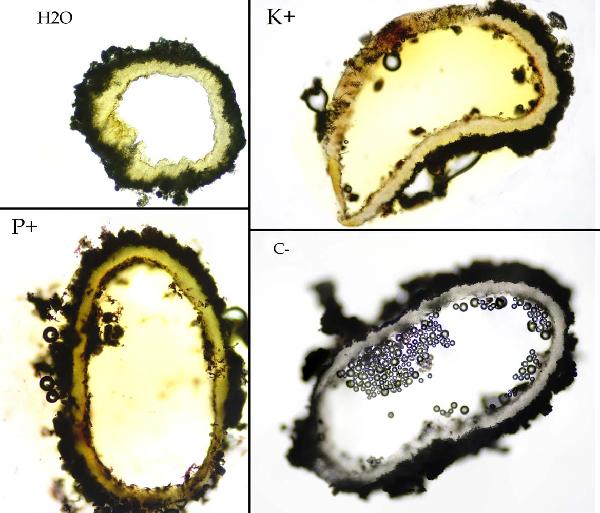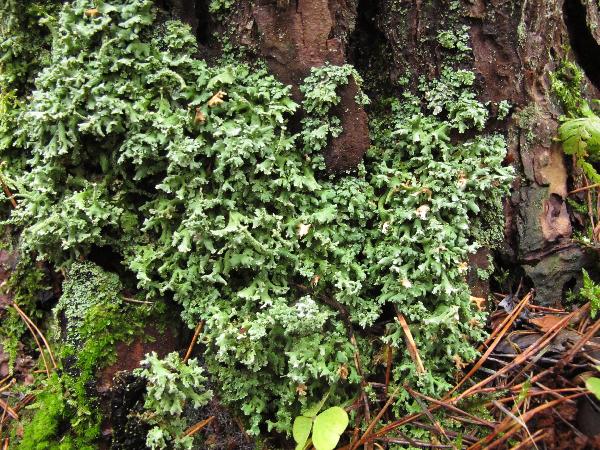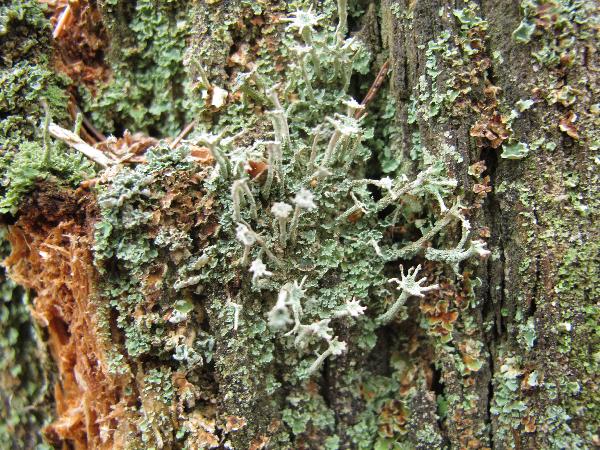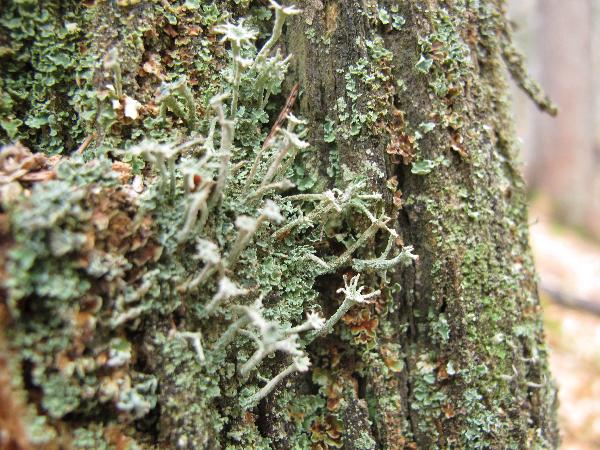Cladonia polydactyla (Flörke) Spreng.
Caroli Linnaei Syst. Veget., 4: 274, 1827. Basionym: Cenomyce polydactyla Flörke - Deutsch. Lich., 10: 13, 1821, nom. cons.
Synonyms: Cladonia bouillennei P.A. Duvign.; Cladonia flabelliformis Vain.
Distribution: N - Frl (Tretiach & Hafellner 2000), Ven (Nascimbene 2011), TAA, Lomb (Rivellini & Valcuvia 1996, Valcuvia & Truzzi 2007, 2007b, Brackel 2010, Gheza & al. 2022), Piem (Morisi & Sereno 1995, Isocrono & al. 2004, 2006, Isocrono & Piervittori 2008), VA (Valcuvia 2000), Emil (Nimis & al. 1996, Tretiach & al. 2008, Fariselli & al. 2020). C - Tosc (Loppi & al. 1994, 1997b, Brackel 2015), Marc (Nimis & Tretiach 1999). S - Cal (Puntillo 1996).
Description: Primary thallus squamulose, persistent or evanescent, the squamules middle-sized, divided, 2-8 mm long, 1-3 mm wide, yellowish green on upper side, whitish beneath (often orange-yellow near the attachment point). Podetia slender, hollow inside, 1-2(-3) cm tall, 0.5-2 mm thick, subulate when young, simple or sparingly branched, the tips blunt, later often with narrow, irregular, up to 5 mm wide cups, the margins proliferating or dentate; surface glaucous green to greenish grey, corticate only at base and inside the cups, squamulose especially toward the base, farinose- to granulose-sorediate in upper parts, the soredia 30-70 μm in diam. Apothecia scarlet red, often compound, at the margins of cups or terminal. Asci 8-spored, clavate, thickened at apex, with a K/I+ blue tholus and a K/I+ strongly blue outer gelatinous sheath, Cladonia-type. Ascospores 1-celled, hyaline, ellipsoid. Pycnidia scarlet red, semi-immersed at the margins of cups, with a red jelly. Conidia hyaline, curved. Photobiont chlorococcoid. Spot tests: K+ yellow, C-, KC-, P+ yellow, UV-. Chemistry: thamnolic acid, rarely with additional small amounts of usnic acid; rhodocladonic acid in apothecia and pycnidia,Note: a cool-temperate to boreal-montane, circumpolar lichen found on organic soil and rotting wood in woodlands, more rarely on bark, on the basal parts of old trunks; certainly widespread in the Alps, becoming much rarer southwards, where it is mostly confined to old Castanea-stands.
Growth form: Fruticose
Substrata: lignum, soil, terricolous mosses, and plant debris
Photobiont: green algae other than Trentepohlia
Reproductive strategy: mainly asexual, by soredia, or soredia-like structures (e.g. blastidia)
Most common in areas with a humid-warm climate (e.g. most of Tyrrenian Italy)
Commonnes-rarity: (info)
Alpine belt: absent
Subalpine belt: common
Oromediterranean belt: absent
Montane belt: rather rare
Submediterranean belt: extremely rare
Padanian area: absent
Humid submediterranean belt: very rare
Humid mediterranean belt: absent
Dry mediterranean belt: absent
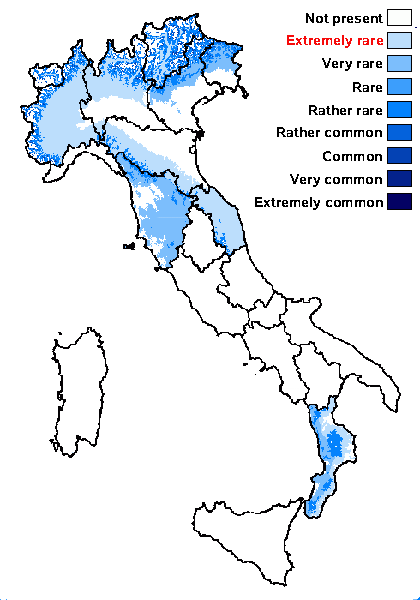
Predictive model
Herbarium samples
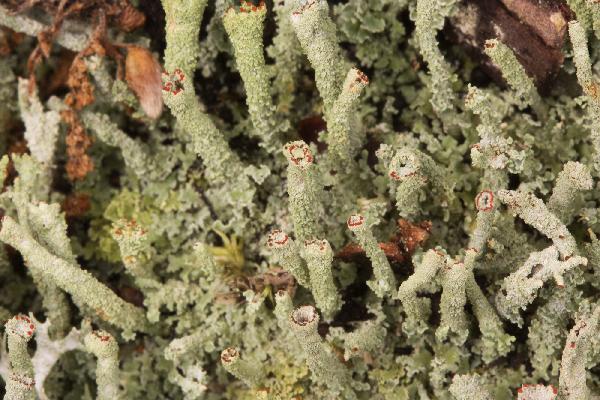
Marta González Garcia - Centro de Estudios Micologicos Asturianos
Spain, Salcedo (Quirós-Asturias), 16-XI-2020, en la base de Castanea sativa, leg & det. M. González, conf. A. R. Burgaz, MGG-34.


P.L. Nimis; Owner: Department of Life Sciences, University of Trieste
Herbarium: TSB (34223)
2003/02/15
primary thallus
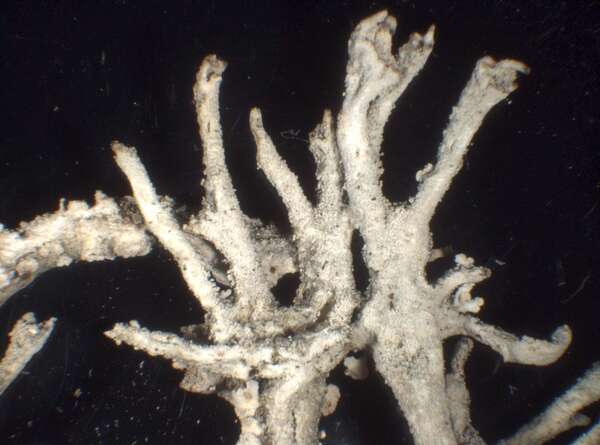

P.L. Nimis; Owner: Department of Life Sciences, University of Trieste
Herbarium: TSB (28264)
2003/02/15
top of podetia
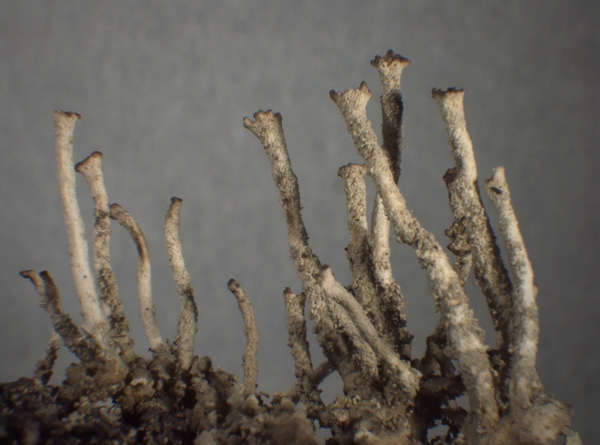

E. Pittao; Owner: Department of Life Sciences, University of Trieste
Herbarium: TSB (33807)
2008.04.02
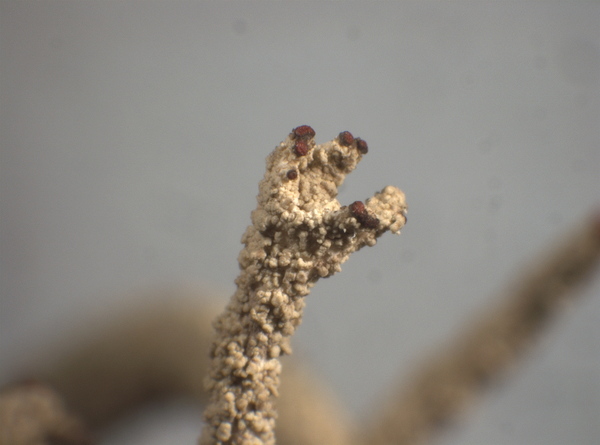

E. Pittao; Owner: Department of Life Sciences, University of Trieste
Herbarium: TSB (34223)
2008.04.02
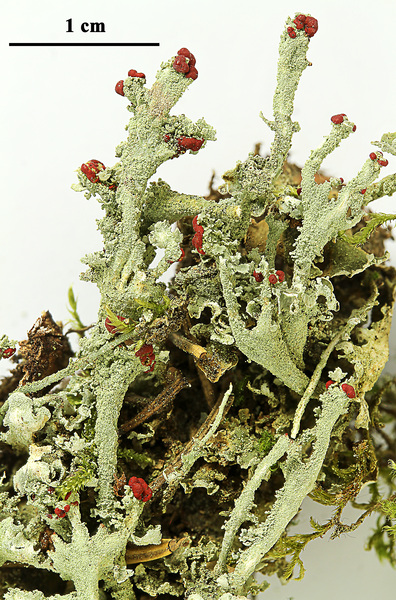

Felix Schumm – CC BY-SA 4.0
[19319], Germany, Baden-Württemberg, Kreis Göppingen, Waldgebiet 2.3 km nordwestlich von Wangen, 48.74312° N, 9.58412 ° E, 455 m, auf feuchten Baumstumpf von Picea am Brosenholzweg. Leg. et det. F. Schumm 09.04.2015
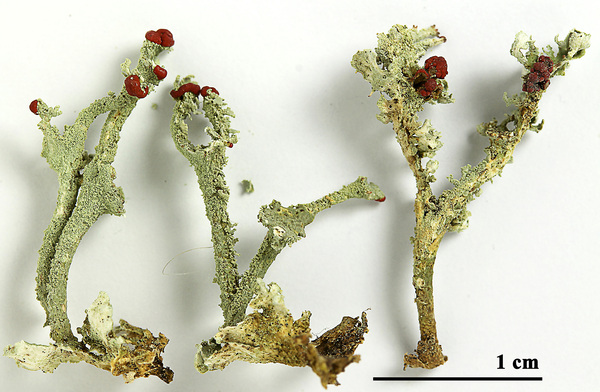

Felix Schumm – CC BY-SA 4.0
[19319], Germany, Baden-Württemberg, Kreis Göppingen, Waldgebiet 2.3 km nordwestlich von Wangen, 48.74312° N, 9.58412 ° E, 455 m, auf feuchten Baumstumpf von Picea am Brosenholzweg. Leg. et det. F. Schumm 09.04.2015
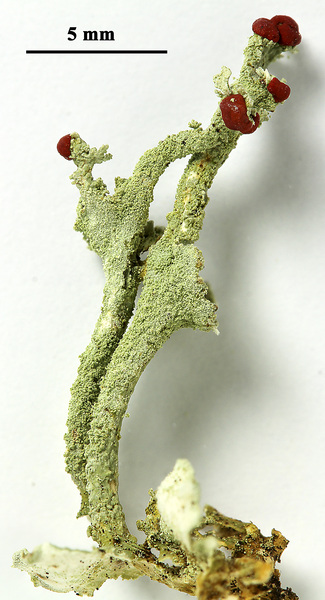

Felix Schumm – CC BY-SA 4.0
[19319], Germany, Baden-Württemberg, Kreis Göppingen, Waldgebiet 2.3 km nordwestlich von Wangen, 48.74312° N, 9.58412 ° E, 455 m, auf feuchten Baumstumpf von Picea am Brosenholzweg. Leg. et det. F. Schumm 09.04.2015
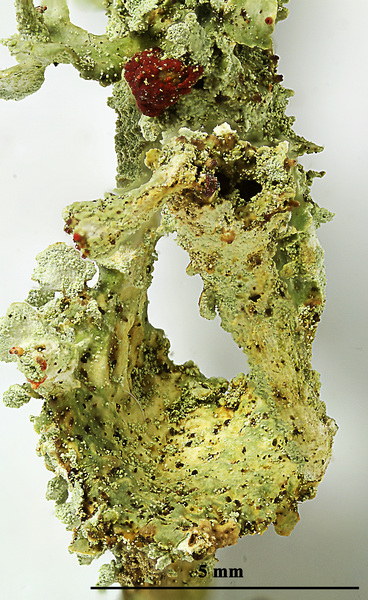

Felix Schumm – CC BY-SA 4.0
[19319], Germany, Baden-Württemberg, Kreis Göppingen, Waldgebiet 2.3 km nordwestlich von Wangen, 48.74312° N, 9.58412 ° E, 455 m, auf feuchten Baumstumpf von Picea am Brosenholzweg. Leg. et det. F. Schumm 09.04.2015
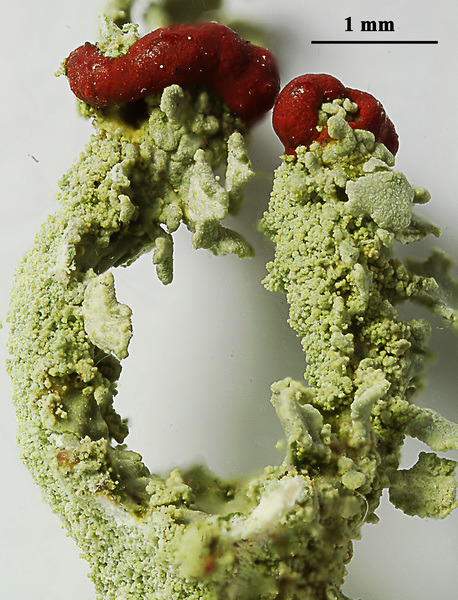

Felix Schumm – CC BY-SA 4.0
[19319], Germany, Baden-Württemberg, Kreis Göppingen, Waldgebiet 2.3 km nordwestlich von Wangen, 48.74312° N, 9.58412 ° E, 455 m, auf feuchten Baumstumpf von Picea am Brosenholzweg. Leg. et det. F. Schumm 09.04.2015
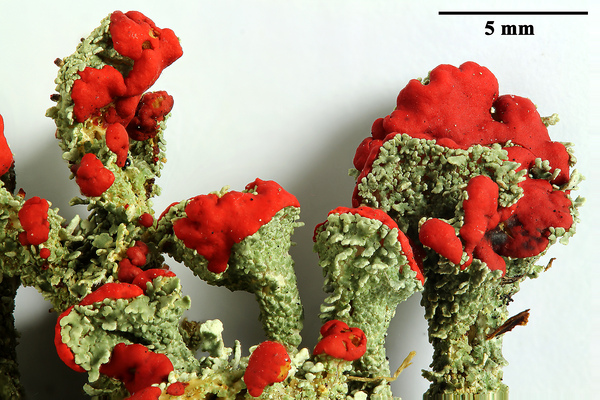

Felix Schumm – CC BY-SA 4.0
[19478], Germany, Schwarzwald, Kreis Freudenstadt, an der Ruhsteinstraße 1 km NW der Darmstädter Hütte und 2.4 km SE vom Mummelsee, Granitbkockhalde. 48.58035° N, 8,22090° E, 930 m. F. Schumm, 6.9.2016, det. F. Schumm
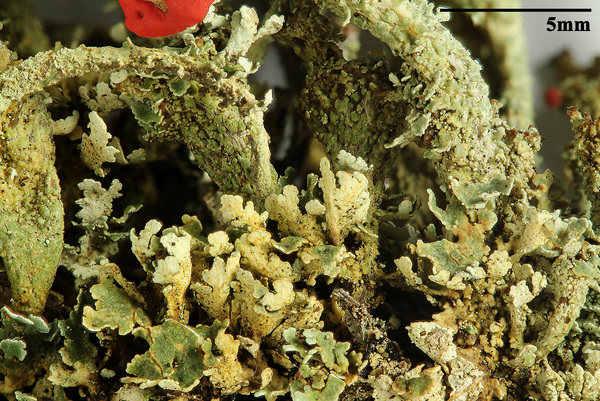

Felix Schumm – CC BY-SA 4.0
[19478], Germany, Schwarzwald, Kreis Freudenstadt, an der Ruhsteinstraße 1 km NW der Darmstädter Hütte und 2.4 km SE vom Mummelsee, Granitbkockhalde. 48.58035° N, 8,22090° E, 930 m. F. Schumm, 6.9.2016, det. F. Schumm
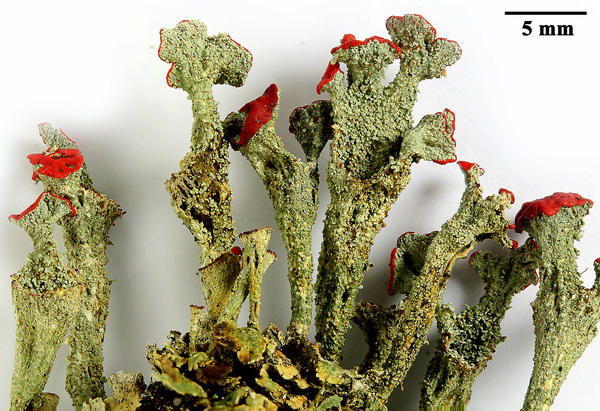

Felix Schumm – CC BY-SA 4.0
[19478], Germany, Schwarzwald, Kreis Freudenstadt, an der Ruhsteinstraße 1 km NW der Darmstädter Hütte und 2.4 km SE vom Mummelsee, Granitbkockhalde. 48.58035° N, 8,22090° E, 930 m. F. Schumm, 6.9.2016, det. F. Schumm
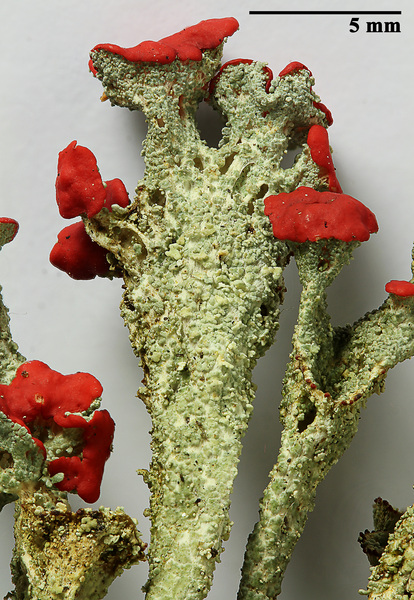

Felix Schumm – CC BY-SA 4.0
[19478], Germany, Schwarzwald, Kreis Freudenstadt, an der Ruhsteinstraße 1 km NW der Darmstädter Hütte und 2.4 km SE vom Mummelsee, Granitbkockhalde. 48.58035° N, 8,22090° E, 930 m. F. Schumm, 6.9.2016, det. F. Schumm


Felix Schumm – CC BY-SA 4.0
[19319], Germany, Baden-Württemberg, Kreis Göppingen, Waldgebiet 2.3 km nordwestlich von Wangen, 48.74312° N, 9.58412 ° E, 455 m, auf feuchten Baumstumpf von Picea am Brosenholzweg. Leg. et det. F. Schumm 09.04.2015,
th: thamnolic acid, r: rhodocladonic acid
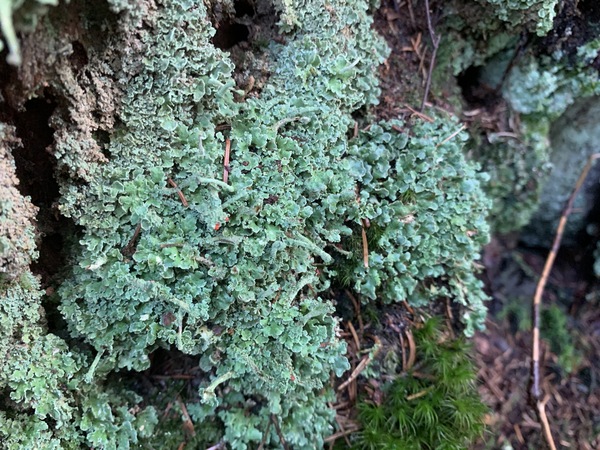
Gabriele Gheza - https://lichenidilombardia.home.blog
Italy, Lombardia, Brescia, Sonico, 1350 m
17/08/2020
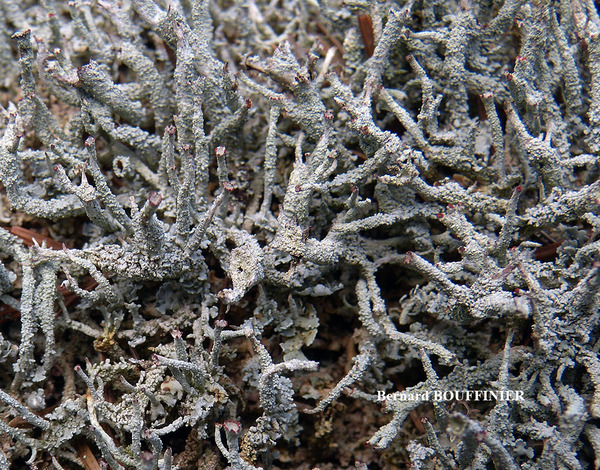
Bernard Bouffinier- Source: http://www.lichensmaritimes.org/index.php?task=fiche&lichen=408&lang=en
France, Menez, Meur
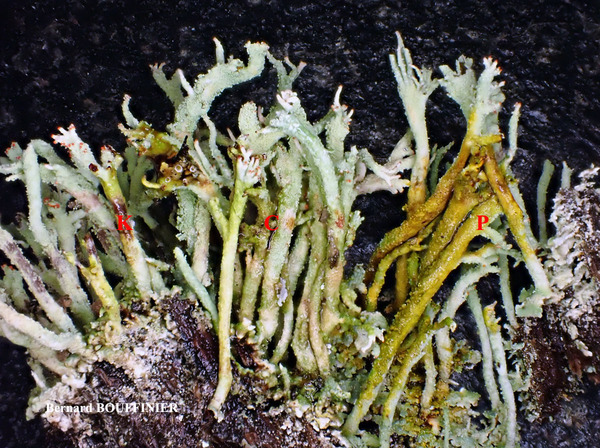
Bernard Bouffinier- Source: http://www.lichensmaritimes.org/index.php?task=fiche&lichen=408&lang=en
France, Argol

Bernard Bouffinier- Source: http://www.lichensmaritimes.org/index.php?task=fiche&lichen=408&lang=en
France, Argol

Bernard Bouffinier- Source: http://www.lichensmaritimes.org/index.php?task=fiche&lichen=408&lang=en
France, Argol
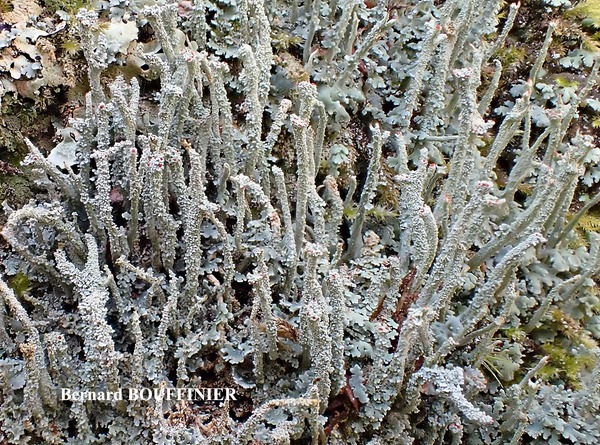
Bernard Bouffinier- Source: http://www.lichensmaritimes.org/index.php?task=fiche&lichen=408&lang=en
France, Argol
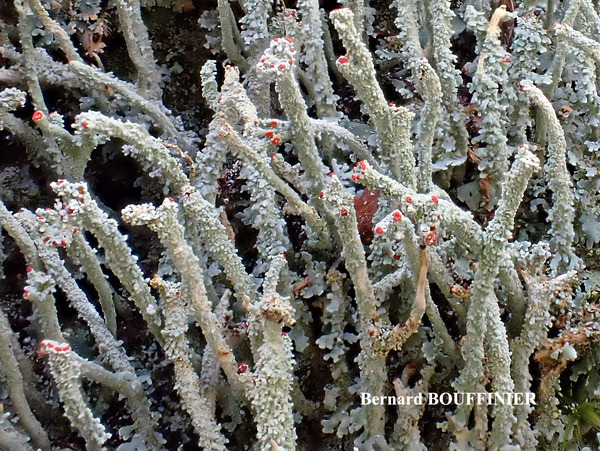
Bernard Bouffinier- Source: http://www.lichensmaritimes.org/index.php?task=fiche&lichen=408&lang=en
France, Argol
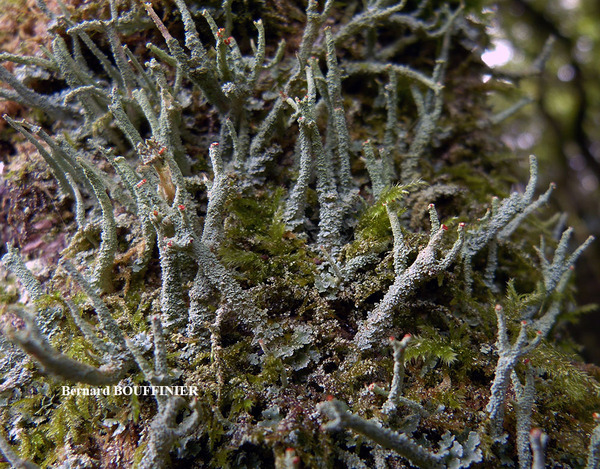
Bernard Bouffinier- Source: http://www.lichensmaritimes.org/index.php?task=fiche&lichen=408&lang=en
France, Locronan
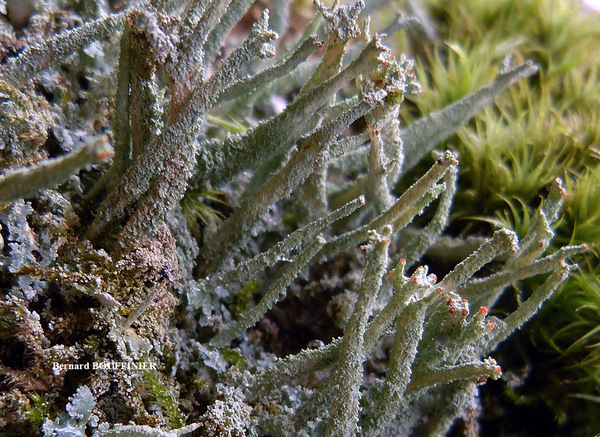
Bernard Bouffinier- Source: http://www.lichensmaritimes.org/index.php?task=fiche&lichen=408&lang=en
France, Locronan
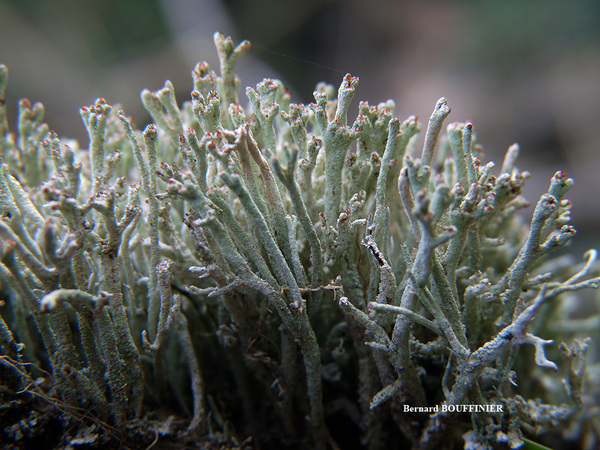
Bernard Bouffinier- Source: http://www.lichensmaritimes.org/index.php?task=fiche&lichen=408&lang=en
France, Térénez
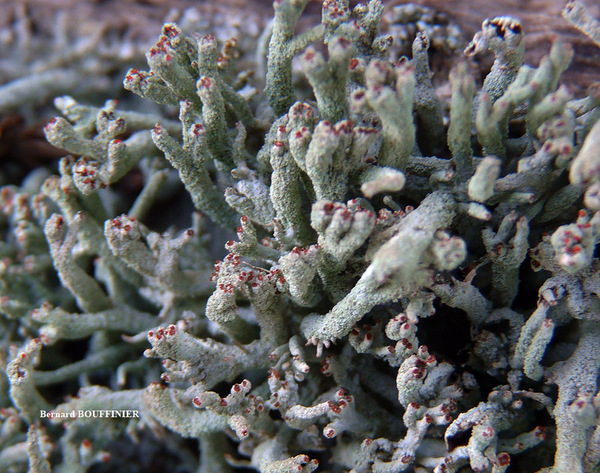
Bernard Bouffinier- Source: http://www.lichensmaritimes.org/index.php?task=fiche&lichen=408&lang=en
France, Térénez
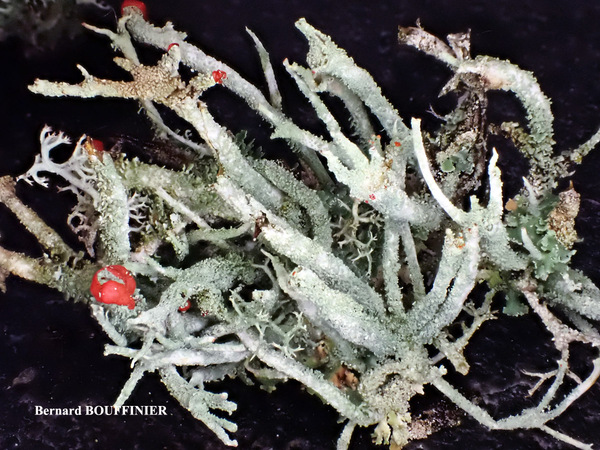
Bernard Bouffinier- Source: http://www.lichensmaritimes.org/index.php?task=fiche&lichen=408&lang=en
France, Menez, Meur
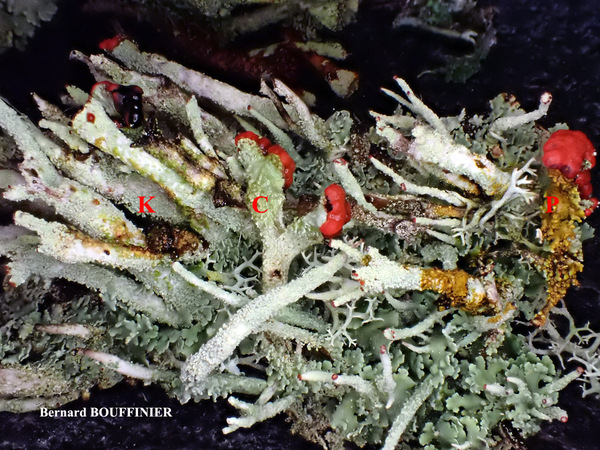
Bernard Bouffinier- Source: http://www.lichensmaritimes.org/index.php?task=fiche&lichen=408&lang=en
France, Menez, Meur
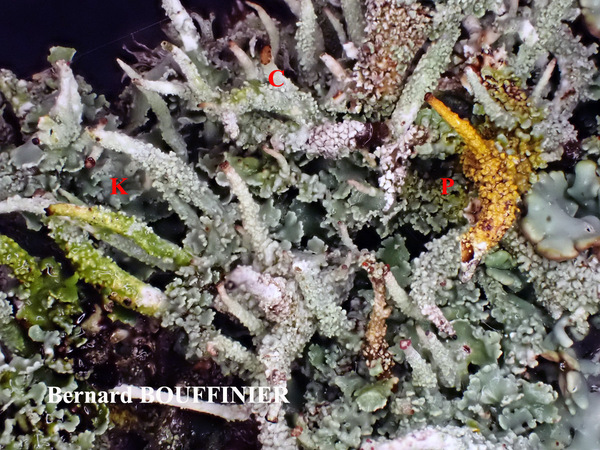
Bernard Bouffinier- Source: http://www.lichensmaritimes.org/index.php?task=fiche&lichen=408&lang=en
France, Menez, Meur
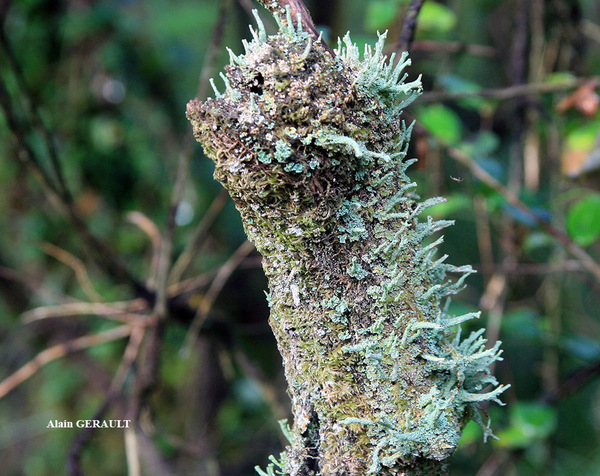
Alain Gerault - Source: http://www.lichensmaritimes.org/index.php?task=fiche&lichen=408&lang=en
France, Saint-Rivoal

Serge Hilbert - Source: http://www.lichensmaritimes.org/index.php?task=fiche&lichen=408&lang=en
France, Saint-Cadou
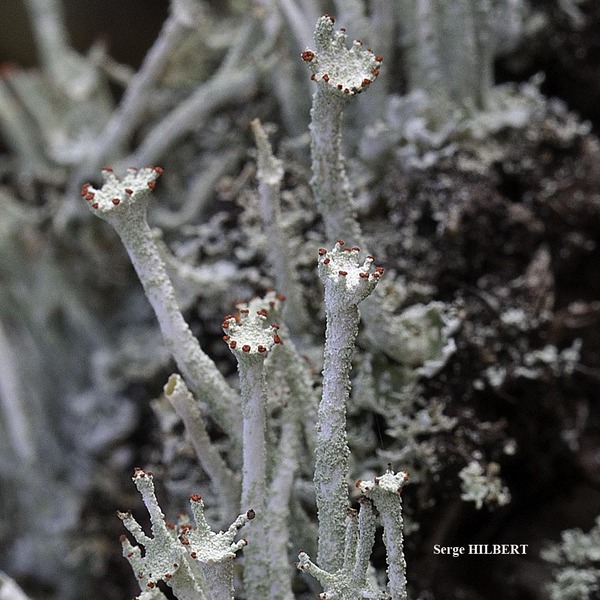
Serge Hilbert - Source: http://www.lichensmaritimes.org/index.php?task=fiche&lichen=408&lang=en
France, Saint-Cadou
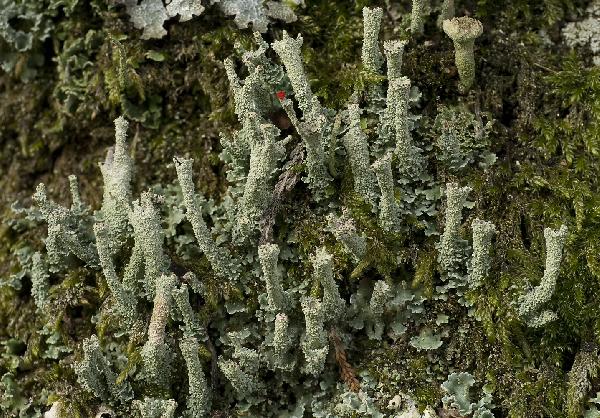
Ulrich Kirschbaum CC BY-SA 4.0 - Source: https://www.thm.de/lse/ulrich-kirschbaum/flechtenbilder
Central Europe; Germany; Baden-Württemberg: Black Forest.
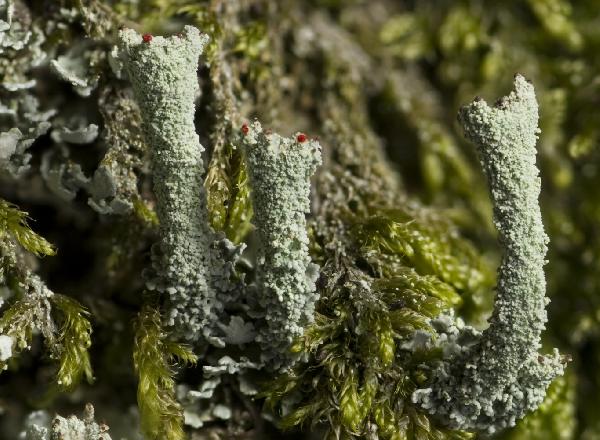
Ulrich Kirschbaum CC BY-SA 4.0 - Source: https://www.thm.de/lse/ulrich-kirschbaum/flechtenbilder
Central Europe; Germany; Baden-Württemberg: Black Forest.
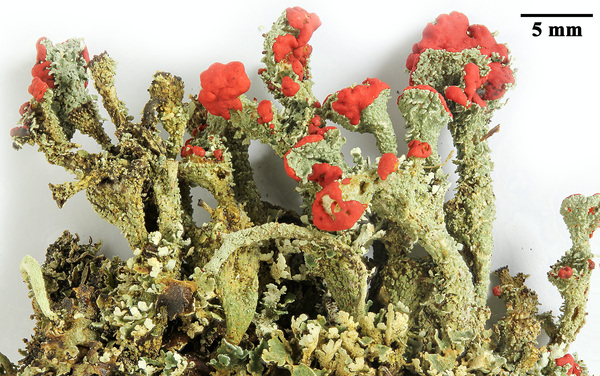

Felix Schumm – CC BY-SA 4.0
[19478], Germany, Schwarzwald, Kreis Freudenstadt, an der Ruhsteinstraße 1 km NW der Darmstädter Hütte und 2.4 km SE vom Mummelsee, Granitbkockhalde. 48.58035° N, 8,22090° E, 930 m. F. Schumm, 6.9.2016, det. F. Schumm
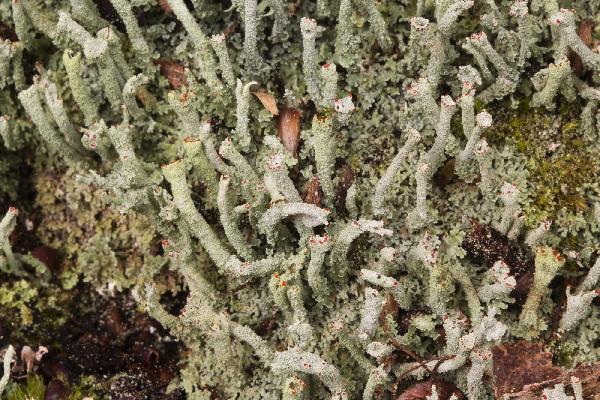
Marta González Garcia - Centro de Estudios Micologicos Asturianos
Spain, Salcedo (Quirós-Asturias), 16-XI-2020, en la base de Castanea sativa, leg & det. M. González, conf. A. R. Burgaz, MGG-34.
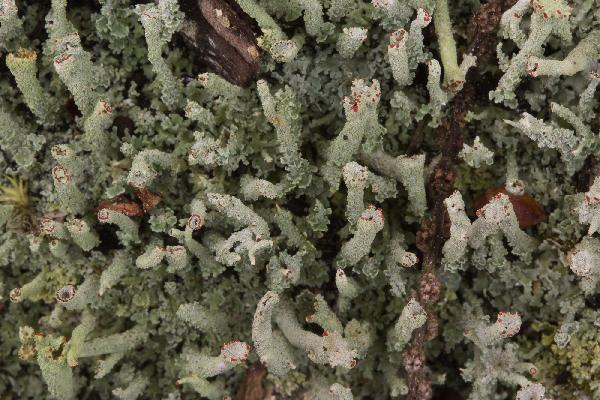
Marta González Garcia - Centro de Estudios Micologicos Asturianos
Spain, Salcedo (Quirós-Asturias), 16-XI-2020, en la base de Castanea sativa, leg & det. M. González, conf. A. R. Burgaz, MGG-34.

Marta González Garcia - Centro de Estudios Micologicos Asturianos
Spain, Salcedo (Quirós-Asturias), 16-XI-2020, en la base de Castanea sativa, leg & det. M. González, conf. A. R. Burgaz, MGG-34.
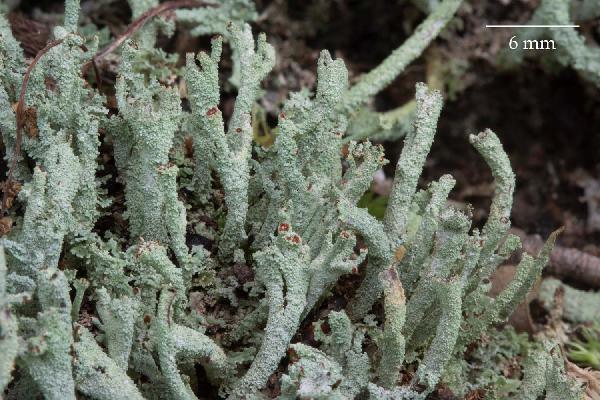
Marta González Garcia - Centro de Estudios Micologicos Asturianos
Spain, Salcedo (Quirós-Asturias), 16-XI-2020, en la base de Castanea sativa, leg & det. M. González, conf. A. R. Burgaz, MGG-34.
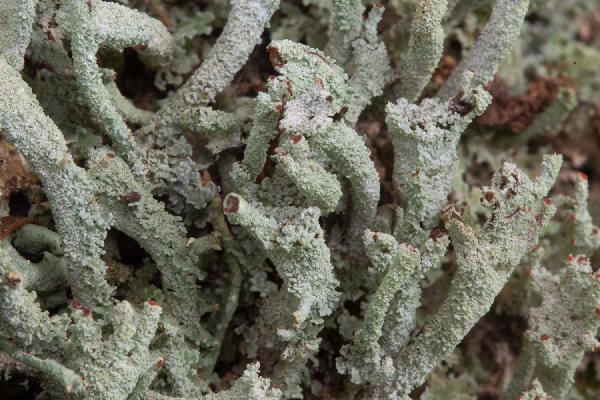
Marta González Garcia - Centro de Estudios Micologicos Asturianos
Spain, Salcedo (Quirós-Asturias), 16-XI-2020, en la base de Castanea sativa, leg & det. M. González, conf. A. R. Burgaz, MGG-34.

Marta González Garcia - Centro de Estudios Micologicos Asturianos
Spain, Salcedo (Quirós-Asturias), 16-XI-2020, en la base de Castanea sativa, leg & det. M. González, conf. A. R. Burgaz, MGG-34.
Growth form: Fruticose
Substrata: lignum, soil, terricolous mosses, and plant debris
Photobiont: green algae other than Trentepohlia
Reproductive strategy: mainly asexual, by soredia, or soredia-like structures (e.g. blastidia)
Most common in areas with a humid-warm climate (e.g. most of Tyrrenian Italy)
Commonnes-rarity: (info)
Alpine belt: absent
Subalpine belt: common
Oromediterranean belt: absent
Montane belt: rather rare
Submediterranean belt: extremely rare
Padanian area: absent
Humid submediterranean belt: very rare
Humid mediterranean belt: absent
Dry mediterranean belt: absent

Predictive model
| Herbarium samples |

Marta González Garcia - Centro de Estudios Micologicos Asturianos
Spain, Salcedo (Quirós-Asturias), 16-XI-2020, en la base de Castanea sativa, leg & det. M. González, conf. A. R. Burgaz, MGG-34.


P.L. Nimis; Owner: Department of Life Sciences, University of Trieste
Herbarium: TSB (34223)
2003/02/15
primary thallus


P.L. Nimis; Owner: Department of Life Sciences, University of Trieste
Herbarium: TSB (28264)
2003/02/15
top of podetia


E. Pittao; Owner: Department of Life Sciences, University of Trieste
Herbarium: TSB (33807)
2008.04.02


E. Pittao; Owner: Department of Life Sciences, University of Trieste
Herbarium: TSB (34223)
2008.04.02


Felix Schumm – CC BY-SA 4.0
[19319], Germany, Baden-Württemberg, Kreis Göppingen, Waldgebiet 2.3 km nordwestlich von Wangen, 48.74312° N, 9.58412 ° E, 455 m, auf feuchten Baumstumpf von Picea am Brosenholzweg. Leg. et det. F. Schumm 09.04.2015


Felix Schumm – CC BY-SA 4.0
[19319], Germany, Baden-Württemberg, Kreis Göppingen, Waldgebiet 2.3 km nordwestlich von Wangen, 48.74312° N, 9.58412 ° E, 455 m, auf feuchten Baumstumpf von Picea am Brosenholzweg. Leg. et det. F. Schumm 09.04.2015


Felix Schumm – CC BY-SA 4.0
[19319], Germany, Baden-Württemberg, Kreis Göppingen, Waldgebiet 2.3 km nordwestlich von Wangen, 48.74312° N, 9.58412 ° E, 455 m, auf feuchten Baumstumpf von Picea am Brosenholzweg. Leg. et det. F. Schumm 09.04.2015


Felix Schumm – CC BY-SA 4.0
[19319], Germany, Baden-Württemberg, Kreis Göppingen, Waldgebiet 2.3 km nordwestlich von Wangen, 48.74312° N, 9.58412 ° E, 455 m, auf feuchten Baumstumpf von Picea am Brosenholzweg. Leg. et det. F. Schumm 09.04.2015


Felix Schumm – CC BY-SA 4.0
[19319], Germany, Baden-Württemberg, Kreis Göppingen, Waldgebiet 2.3 km nordwestlich von Wangen, 48.74312° N, 9.58412 ° E, 455 m, auf feuchten Baumstumpf von Picea am Brosenholzweg. Leg. et det. F. Schumm 09.04.2015


Felix Schumm – CC BY-SA 4.0
[19478], Germany, Schwarzwald, Kreis Freudenstadt, an der Ruhsteinstraße 1 km NW der Darmstädter Hütte und 2.4 km SE vom Mummelsee, Granitbkockhalde. 48.58035° N, 8,22090° E, 930 m. F. Schumm, 6.9.2016, det. F. Schumm


Felix Schumm – CC BY-SA 4.0
[19478], Germany, Schwarzwald, Kreis Freudenstadt, an der Ruhsteinstraße 1 km NW der Darmstädter Hütte und 2.4 km SE vom Mummelsee, Granitbkockhalde. 48.58035° N, 8,22090° E, 930 m. F. Schumm, 6.9.2016, det. F. Schumm


Felix Schumm – CC BY-SA 4.0
[19478], Germany, Schwarzwald, Kreis Freudenstadt, an der Ruhsteinstraße 1 km NW der Darmstädter Hütte und 2.4 km SE vom Mummelsee, Granitbkockhalde. 48.58035° N, 8,22090° E, 930 m. F. Schumm, 6.9.2016, det. F. Schumm


Felix Schumm – CC BY-SA 4.0
[19478], Germany, Schwarzwald, Kreis Freudenstadt, an der Ruhsteinstraße 1 km NW der Darmstädter Hütte und 2.4 km SE vom Mummelsee, Granitbkockhalde. 48.58035° N, 8,22090° E, 930 m. F. Schumm, 6.9.2016, det. F. Schumm


Felix Schumm – CC BY-SA 4.0
[19319], Germany, Baden-Württemberg, Kreis Göppingen, Waldgebiet 2.3 km nordwestlich von Wangen, 48.74312° N, 9.58412 ° E, 455 m, auf feuchten Baumstumpf von Picea am Brosenholzweg. Leg. et det. F. Schumm 09.04.2015,
th: thamnolic acid, r: rhodocladonic acid

Gabriele Gheza - https://lichenidilombardia.home.blog
Italy, Lombardia, Brescia, Sonico, 1350 m
17/08/2020

Bernard Bouffinier- Source: http://www.lichensmaritimes.org/index.php?task=fiche&lichen=408&lang=en
France, Menez, Meur

Bernard Bouffinier- Source: http://www.lichensmaritimes.org/index.php?task=fiche&lichen=408&lang=en
France, Argol

Bernard Bouffinier- Source: http://www.lichensmaritimes.org/index.php?task=fiche&lichen=408&lang=en
France, Argol

Bernard Bouffinier- Source: http://www.lichensmaritimes.org/index.php?task=fiche&lichen=408&lang=en
France, Argol

Bernard Bouffinier- Source: http://www.lichensmaritimes.org/index.php?task=fiche&lichen=408&lang=en
France, Argol

Bernard Bouffinier- Source: http://www.lichensmaritimes.org/index.php?task=fiche&lichen=408&lang=en
France, Argol

Bernard Bouffinier- Source: http://www.lichensmaritimes.org/index.php?task=fiche&lichen=408&lang=en
France, Locronan

Bernard Bouffinier- Source: http://www.lichensmaritimes.org/index.php?task=fiche&lichen=408&lang=en
France, Locronan

Bernard Bouffinier- Source: http://www.lichensmaritimes.org/index.php?task=fiche&lichen=408&lang=en
France, Térénez

Bernard Bouffinier- Source: http://www.lichensmaritimes.org/index.php?task=fiche&lichen=408&lang=en
France, Térénez

Bernard Bouffinier- Source: http://www.lichensmaritimes.org/index.php?task=fiche&lichen=408&lang=en
France, Menez, Meur

Bernard Bouffinier- Source: http://www.lichensmaritimes.org/index.php?task=fiche&lichen=408&lang=en
France, Menez, Meur

Bernard Bouffinier- Source: http://www.lichensmaritimes.org/index.php?task=fiche&lichen=408&lang=en
France, Menez, Meur

Alain Gerault - Source: http://www.lichensmaritimes.org/index.php?task=fiche&lichen=408&lang=en
France, Saint-Rivoal

Serge Hilbert - Source: http://www.lichensmaritimes.org/index.php?task=fiche&lichen=408&lang=en
France, Saint-Cadou

Serge Hilbert - Source: http://www.lichensmaritimes.org/index.php?task=fiche&lichen=408&lang=en
France, Saint-Cadou

Ulrich Kirschbaum CC BY-SA 4.0 - Source: https://www.thm.de/lse/ulrich-kirschbaum/flechtenbilder
Central Europe; Germany; Baden-Württemberg: Black Forest.

Ulrich Kirschbaum CC BY-SA 4.0 - Source: https://www.thm.de/lse/ulrich-kirschbaum/flechtenbilder
Central Europe; Germany; Baden-Württemberg: Black Forest.


Felix Schumm – CC BY-SA 4.0
[19478], Germany, Schwarzwald, Kreis Freudenstadt, an der Ruhsteinstraße 1 km NW der Darmstädter Hütte und 2.4 km SE vom Mummelsee, Granitbkockhalde. 48.58035° N, 8,22090° E, 930 m. F. Schumm, 6.9.2016, det. F. Schumm

Marta González Garcia - Centro de Estudios Micologicos Asturianos
Spain, Salcedo (Quirós-Asturias), 16-XI-2020, en la base de Castanea sativa, leg & det. M. González, conf. A. R. Burgaz, MGG-34.

Marta González Garcia - Centro de Estudios Micologicos Asturianos
Spain, Salcedo (Quirós-Asturias), 16-XI-2020, en la base de Castanea sativa, leg & det. M. González, conf. A. R. Burgaz, MGG-34.

Marta González Garcia - Centro de Estudios Micologicos Asturianos
Spain, Salcedo (Quirós-Asturias), 16-XI-2020, en la base de Castanea sativa, leg & det. M. González, conf. A. R. Burgaz, MGG-34.

Marta González Garcia - Centro de Estudios Micologicos Asturianos
Spain, Salcedo (Quirós-Asturias), 16-XI-2020, en la base de Castanea sativa, leg & det. M. González, conf. A. R. Burgaz, MGG-34.

Marta González Garcia - Centro de Estudios Micologicos Asturianos
Spain, Salcedo (Quirós-Asturias), 16-XI-2020, en la base de Castanea sativa, leg & det. M. González, conf. A. R. Burgaz, MGG-34.

 INDEX FUNGORUM
INDEX FUNGORUM
 GBIF
GBIF
 DOLICHENS
DOLICHENS
